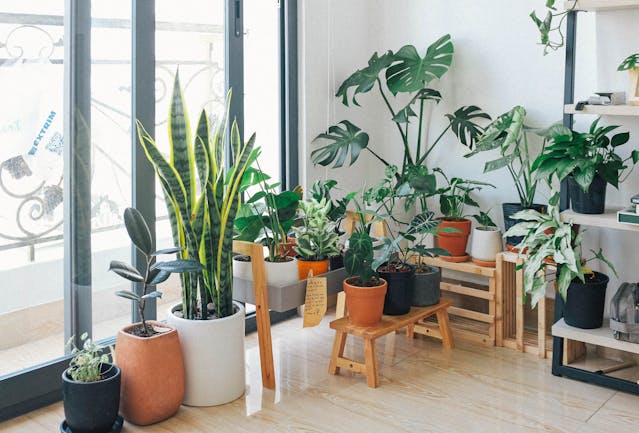Hey there, plant enthusiasts! Are you looking to spruce up your home with some leafy companions? Indoor plants are not only pretty to look at but also bring a breath of fresh air into your space. In this easy guide, we’ll explore different types of indoor plants and how to care for them, so you can add a touch of greenery to your home with confidence.

- Why Indoor Plants? Indoor plants don’t just look nice – they also help improve air quality by absorbing carbon dioxide and releasing oxygen. Plus, they can boost your mood and reduce stress, making your home a happier and healthier place to be.
- Choosing the Right Plants: Not all plants are suited for indoor living, so it’s important to choose ones that thrive in indoor conditions. Some popular indoor plants include:
- Snake Plant: Known for its resilience and air-purifying properties.
- Spider Plant: Easy to care for and great for beginners.
- Pothos: Tolerant of low light and available in various leaf colors.
- Peace Lily: Produces beautiful white flowers and helps purify the air.
- ZZ Plant: Requires minimal watering and can tolerate low light conditions.
- Light Requirements: Different plants have different light requirements, so it’s essential to place them in the right spot:
- Low Light: Plants like Snake Plants and ZZ Plants can thrive in low light conditions, making them perfect for rooms with few windows.
- Medium Light: Plants like Pothos and Spider Plants prefer moderate light and can be placed near windows with filtered sunlight.
- Bright Light: Plants like Succulents and Cacti thrive in bright, indirect sunlight and should be placed near south-facing windows.
- Watering Tips: Overwatering is a common mistake when caring for indoor plants, so it’s important to water them properly:
- Check the soil moisture by sticking your finger about an inch into the soil. If it feels dry, it’s time to water.
- Water your plants thoroughly but allow excess water to drain away to prevent root rot.
- Avoid letting your plants sit in water-filled saucers, as this can lead to overwatering.
- Humidity and Temperature: Most indoor plants prefer moderate humidity levels and temperatures between 60-75°F (15-24°C). To increase humidity, you can place a tray filled with water and pebbles beneath your plants or use a humidifier.
- Pest Control: Keep an eye out for common pests like aphids, spider mites, and mealybugs, which can infest indoor plants. If you notice any pests, gently wipe the leaves with a damp cloth or use insecticidal soap to control the infestation.
- Repotting and Pruning: As your plants grow, they may outgrow their pots and require repotting. Choose a pot that’s slightly larger than the current one and use well-draining soil to prevent waterlogging. Additionally, prune your plants regularly to remove dead or yellowing leaves and encourage new growth.
Indoor plants are a wonderful addition to any home, bringing beauty, freshness, and a sense of tranquility to your space. By choosing the right plants, providing them with the proper care, and incorporating them into your home decor, you can enjoy the benefits of indoor gardening and create a greener, more vibrant living environment. So go ahead, embrace your inner plant parent, and let the greenery thrive!